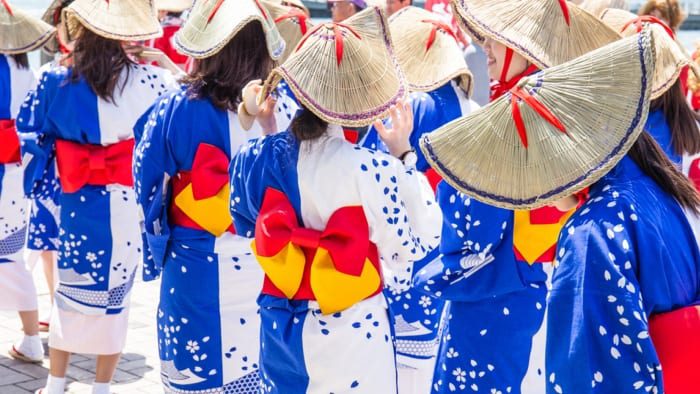Traditional Japanese clothing adapts to the weather and seasons, with thicker kimonos worn during colder months, featuring winter-inspired patterns and designs. In contrast, summer kimonos boast brighter colors and thinner fabrics. Additionally, specific kimono colors and designs are worn by Japanese children during certain traditional festivals and celebrations. If you have any questions, feel free to send us an email!
Omiyamairi – Infant’s First Visit to the Shrine
This ceremony marks a baby’s first visit to the shrine and typically takes place before the child is 100 days old. It is a religious event to express gratitude to the gods for a safe delivery and seek their acceptance of the baby into the local community. During the Omiyamairi, babies usually wear a white under kimono adorned with lace. Some also don a brightly colored outer kimono for girls and a black kimono with the boys’ family crest.
Shichi-Go-San (Seven-Five-Three)
In November, the Shichi-Go-San festival is held to celebrate the good health of three and seven-year-old girls and five-year-old boys while thanking the local deities for protecting the children. They are dressed in traditional kimonos, often for the first time in their lives. Little girls may wear a lightly padded vest as well. In recent times, some children opt for formal Western wear for this occasion.
Seijin-no-Hi (Coming of Age Day)
On this day in January, young adults of both genders celebrate their coming of age at 20. They are considered adults and contributing members of Japanese society from this point onward. To mark this passage into adulthood, they dress in their traditional Japanese clothing and visit shrines, receive gifts, and celebrate with family and friends. Boys often wear a haori and hakama with their family crests, while girls opt for furisode, a traditional kimono with long, flowing sleeves.



